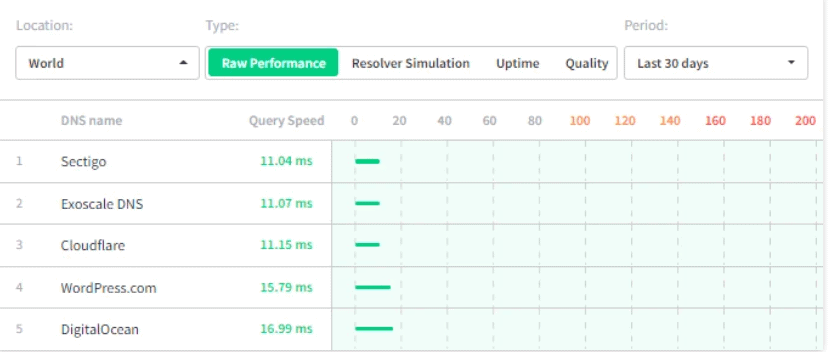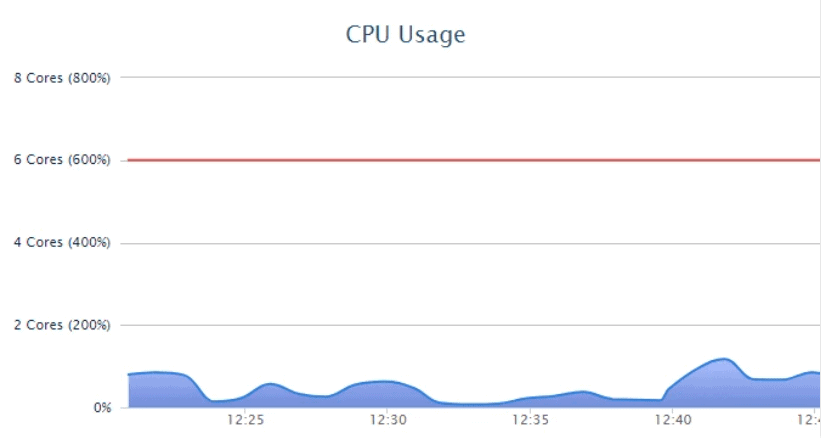Reducing server response times (TTFB) is essential for delivering a positive user experience on your WordPress website. By following the tips in this post, you can minimize the amount of time it takes for your server to send back the first byte of information to a visitor’s browser.
This will help improve your website’s overall performance and reduce the chances of visitors bouncing off your page. Let’s take a look at how you can achieve this goal.
What is TTFB?
TTFB stands for “time to first byte”. It is a measure of how long it takes for a web server to respond to a request from a browser. The time includes the time taken to send the request, as well as the time taken to receive the first byte of data from the server.
TTFB is an important performance metric, as it can give insights into how responsive a server is. A slow TTFB can indicate that the server is overloaded or that there is network latency.
TTFB can also be affected by the size of the files being requested, as well as the number of simultaneous requests being made. optimization techniques can help to reduce TTFB.
What is a good TTFB?
When it comes to website performance, TTFB (time to first byte) is an important metric to keep an eye on. TTFB measures the time it takes for a browser to receive the first byte of data from a web server.
A low TTFB indicates that the server is responding quickly, while a high TTFB can indicate that there are problems with the server or the connection between the server and the browser. In general, a good TTFB is less than 200 milliseconds.
However, the optimal TTFB will vary depending on the specific website and its audience. For example, a website with a global audience may need to have a lower TTFB in order to accommodate users in different time zones.
Ultimately, the best way to determine the optimal TTFB for your website is to monitor user engagement and satisfaction levels. If users are leaving your site because they are frustrated with slow load times, then it’s time to make some changes.
How to test TTFB?
Time to First Byte, or TTFB, is a measure of how long it takes for a web server to respond to a request from a browser. It is an important metric for evaluating website performance, as it can impact page load times.
There are a few different ways to test TTFB. One common method is to use the WebPageTest tool. This tool works by sending requests to a web server and measuring the time it takes for the first byte of data to be received. Another popular method is to use the ApacheBench tool.
This tool works by sending multiple requests to a web server and measuring the average time it takes for the first byte of data to be received.
There are also a number of other tools available that can be used to test TTFB. Whichever method you choose, it is important to test TTFB on a regular basis to ensure that your website is performing optimally.
How to fix a slow TTFB?
TTFB (Time to First Byte) is the time it takes for a web server to respond to a request from a browser. A slow TTFB can cause delays in loading web pages and can be frustrating for users.
There are a number of factors that can contribute to a slow TTFB, including heavy traffic, inefficient code, and poorly configured servers.
However, there are a few simple steps that can be taken to fix a slow TTFB.
First, check the server’s CPU usage and memory usage to see if it is overloaded. If so, consider upgrading the server or adding additional resources.
Second, take a look at the code to see if there are any bottlenecks that can be addressed.
Finally, make sure that the server is properly configured to handle the load. By taking these steps, you can help to ensure that your website loads quickly and efficiently.
1. Reduce CPU usage
A slow TTFB (Time To First Byte) can be frustrating for users and negatively impact your website’s performance. In order to reduce CPU usage and fix a slow TTFB, you can take a number of steps.
First, optimize your images to reduce file size.
Second, minify your HTML, CSS, and JavaScript files to remove unnecessary whitespace and comments.
Third, enable compression on your web server to compress files before they are sent to the browser.
Finally, cache static resources such as images, CSS, and JavaScript files so that the browser doesn’t have to request them each time the page is loaded.
By taking these steps, you can dramatically improve your website’s performance and reduce the impact of a slow TTFB.
2. Avoid shared hosting
A slow TTFB (time to first byte) can be a frustrating problem for website owners. Not only does it slow down the loading of your pages, but it can also negatively impact your SEO and conversion rates.
One common cause of a slow TTFB is shared hosting. When you share a server with other websites, your site is competing for resources with all of the other sites on the server.
As a result, your pages can take longer to load. If you’re looking to fix a slow TTFB, avoid shared hosting and opt for a dedicated server instead. With a dedicated server, you’ll have access to all of the resources you need to ensure fast page loading times.
3. Move to a faster DNS
A DNS, or Domain Name System, is responsible for translating web addresses into IP addresses. This process, known as DNS resolution, is essential for loading websites.
However, DNS resolution can sometimes be slow, resulting in a long TTFB, or Time to First Byte. One way to fix this problem is to switch to a faster DNS.
There are a number of free and commercial DNS providers that offer faster resolutions than the default DNS provided by your ISP. In addition, you can use a service such as Cloudflare to cache DNS records and improve performance.
By switching to a faster DNS, you can significantly improve the speed of your website.
Quick Links
- Reasons To Consolidate WordPress Hosting; Must Read
- How to Duplicate a Page or Post in WordPress
- What Is Managed WordPress Hosting?; Informative Guide! (Features &; Pricing)
Conclusion- How To Reduce Server Response Times (TTFB) In WordPress 2024
We hope that this article has helped you understand how to reduce server response times (TTFB) in WordPress. By following the recommendations and tips outlined in this post, you can make your website faster and provide a better user experience for your visitors.
Have any questions or comments? Leave them below and we’ll get back to you soon. Thanks for reading!




